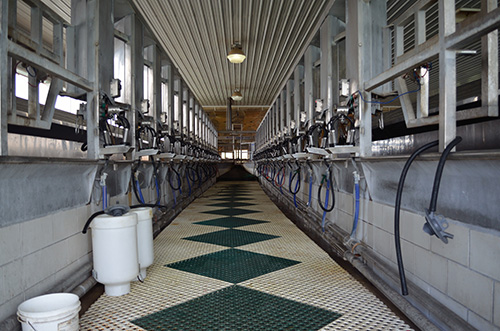
Nothing is more frustrating than a problem without an answer. When we have a setback in production or a mastitis flare-up, the parlor can be a daunting place to start. But, it doesn't have to be the headache for which it is often perceived. "Taking the time to routinely walk through the parlor or milking barn to make observations pays big dividends for the dairy," noted David Reid, Rock Ridge Dairy Consulting, in the National Mastitis Council's newsletter.
In the parlor, consistency is key. When observing people in the parlor, it is essential to monitor the consistency of the parlor procedures and routine. Udder preparation is designed to take advantage of the physiology of the cow. The cow requires 10 to 12 seconds of teat contact time to stimulate oxytocin release, followed by unit attachment 90 seconds after the teats are initially touched. The primary issue on many dairies is achieving those two goals on a milking to milking basis.
Whether you're looking to enhance parlor efficiency or work through an issue, Reid shared the following seven questions to help producers understand and troubleshoot their parlor routine:
- How long does it take cows to move from the entry gate to the front stall in the parlor?
- How long does a cow stand in this stall before a milker begins to perform the first step of the udder preparation routine?
- The goal is to begin the prep process as soon as the first cow turns into position at the first stall.
- Do all milkers follow the written protocol?
- If a group or territorial routine is being used, do the milkers always go back to the first cow of the group when they complete each procedure?
- If predipping is used, how good is the predip coverage?
- What percent of cows leave the parlor without having teats properly dipped?
- Are teat ends clean when units are attached?
- How clean are the filter socks when they are removed either midway through milking or at the end of milking?
- Do the milkers "think clean" during udder prep?
- Do they:
- Always wear gloves?
- Use drop hoses to clean units when necessary?
- Follow the procedures for cleaning the parlor?
- Wash milking aprons regularly?
- Keep teat dippers clean and free of debris?
- Have the proper equipment to maintain the parlor during milking?
- Always wear gloves?

The author, Amanda Smith, was an associate editor and an animal science graduate of Cornell University. Smith covers feeding, milk quality and heads up the World Dairy Expo Supplement. She grew up on a Medina, N.Y., dairy, and interned at a 1,700-cow western New York dairy, a large New York calf and heifer farm, and studied in New Zealand for one semester.








